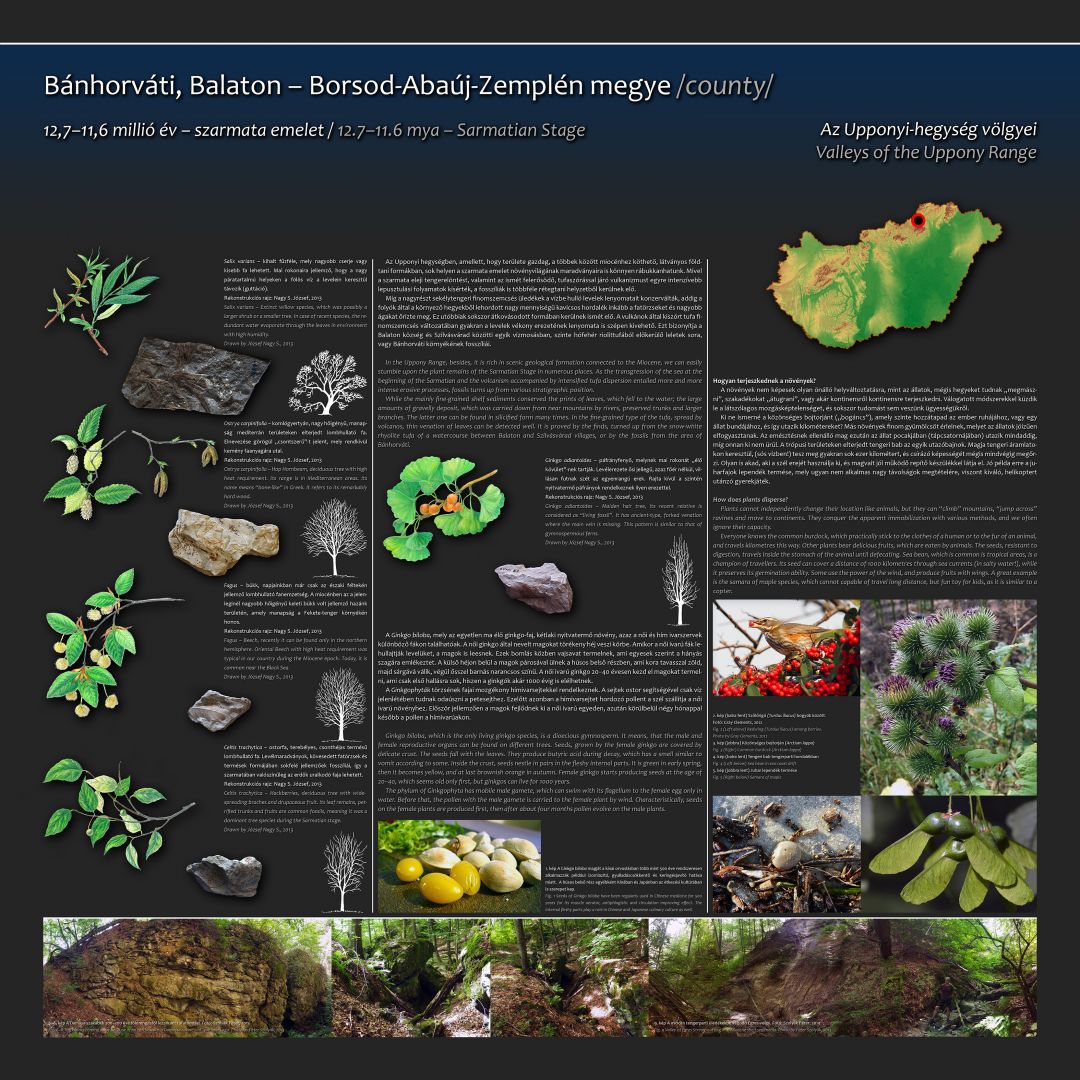FLORA OF THE NEOGENE
Bánhorváti, Balaton - Borsod-Abaúj-Zemplén megye /county/
12.7–11.6 mya – Sarmatian Stage
In the Uppony Range, besides, it is rich in scenic geological formation connected to the Miocene, we can easily stumble upon the plant remains of the Sarmatian Stage in numerous places. As the transgression of the sea at the beginning of the Sarmatian and the volcanism accompanied by intensified tufa dispersion entailed more and more intense erosive processes, fossils turns up from various stratigraphic position.
While the mainly fine-grained shelf sediments conserved the prints of leaves, which fell to the water; the large amounts of gravelly deposit, which was carried down from near mountains by rivers, preserved trunks and larger branches. The latter one can be found in silicified form many times. In the fine-grained type of the tufa, spread by volcanos, thin venation of leaves can be detected well. It is proved by the finds, turned up from the snow-white rhyolite tufa of a watercourse between Balaton and Szilvásvárad villages, or by the fossils from the area of Bánhorváti.
How does plants disperse?
Plants cannot independently change their location like animals, but they can “climb” mountains, “jump across” ravines and move to continents. They conquer the apparent immobilization with various methods, and we often ignore their capacity.
Everyone knows the common burdock, which practically stick to the clothes of a human or to the fur of an animal, and travels kilometres this way. Other plants bear delicious fruits, which are eaten by animals. The seeds, resistant to digestion, travels inside the stomach of the animal until defecating. Sea bean, which is common is tropical areas, is a champion of travellers. Its seed can cover a distance of 1000 kilometres through sea currents (in salty water!), while it preserves its germination ability. Some use the power of the wind, and produce fruits with wings. A great example is the samara of maple species, which cannot capable of travel long distance, but fun toy for kids, as it is similar to a copter.
